February 23, 2020
A constant cool breeze flowed through the truck while the surf lulled us all night. The forecast was for robust wind, but it had been gentle. It felt a bit awkward to be getting up and dressed while the locals again walked nearby. The dunes behind our truck provided a somewhat more secluded spot to brush our teeth out of view. We were already packed and ready to go, having decided to leave in advance of the strong winds. But ahead lay over two hours of the roughest roads we’d ever been on – again.
We climbed up out of the village and met one of the worst parts of the road, the same one we came in on. Curb-size rocks and deep gullies were the norm. I chose not to use 4wd to see if the truck could handle it. It could but I was ready to shift if needed (the truck is equipped with a limited slip real differential, which makes 2wd more effective in low-traction conditions). I worried that the constant pounding would break something, despite going as slow as I could while still having momentum. I could see sharp rocks everywhere but couldn’t miss most of them. I worried about a sidewall puncture that would destroy a tire (changing a tire on such a steep loose road would be difficult at best). I worried that something critical could be shaken loose. How much of this could the truck take? GMC/Chevrolet made millions of these Yukon/Suburban trucks and likely ironed out the bugs long ago, I tried to reassure myself. I kept listening for signs of some impending (or actual) failure. I wondered if we should instead have one of the legendary durable Toyota Land Cruisers. But even with 145,000 miles on it, our truck soldiered on with no complaints. Maybe Land Cruisers weren’t all that much better engineered after all – our last Suburban had 340,000 miles on it when we sold it. While I drove and worried, Susan absorbed the incredible beauty and, when the truck didn’t rock too much, took photos.
Two bone-rattling but stunning hours later, we reversed the route that had taken us to the beach and reached a partially paved road, then a paved road, then a brand-new road. We’d made it out of Agua Verde unscathed. I made a mental note to check several items on the truck when we returned. Cleaning a few pounds of dust out was also on the list. But that would have to wait.
We did not have any particular destination in mind for the day, but the small town of Loreto that we’d passed by on the way south (yet never turned down the road to go into the town) seemed like a good place to get breakfast and perhaps spend a few hours. By the time we got there, the forecasted north winds had arrived with a vengeance. Twenty to 30 mph headwinds slowed us as we pulled into town and looked for a spot for breakfast. Susan found a perfect restaurant (Café Ole) where we filled up on huevos broccoli, French toast and tolerable coffee, and took advantage of decent WiFi.
The winds were shaking the palm trees along the main walking area toward the sea and we decided we should hunker down here. Camping in strong winds is okay, but when it’s on a sandy beach with no protection, it’s uncomfortable (everything blows away and sand gets everywhere), not to mention it’s almost impossible to cook outside. Three days of PB and J was not going to cut it. Because this was more of a resort town, decent hotels were not cheap ($US100 and way up) but a block from where we were parked, in the center of downtown, we found Romanita Campground. It looked okay – just a flat fenced spot to park with maybe ten other campers – but it had lovely swaying palm trees, was cheap ($US10), had hot showers (it had now been four days), and even had WiFi. The last two turned out to be a little optimistic, but we needed a place out of the wind and pulled in. Some warm, lukewarm, then COLD showers and faux-fi later, we met nearby campers from Estes Park, Colorado who were about our age and traveling with their dog in an old van they’d just bought.
After chatting with our Colorado neighbors for awhile, we decided to explore. First, we found the nearby seafront promenade, but the wind made strolling there difficult and had kicked up a nasty sea keeping the fishermen and tour boats at home. We continued our exploration through the tunnel of the tree-canopied walkway of the town, which provided some respite from the wind, and then strolled (or were blown) through side streets of the town for the rest of the afternoon. We found some needed groceries and wandered into a few shops.
Loreto was colorful and friendly. It had the charm of a small Mexican town, but obviously also catered to tourists, mostly from the US and Canada. We learned there are direct flights from California to Loreto’s small airport and tourists stay in a few resorts on the outskirts of town or in charming and overpriced small inns in town. A historical plaque in the central square informed us that in the 1700’s Loreto had been the capital of all of Las Californias, consisting of what is now Baja California Sur, Baja California Norte and California (US).
The real find came as evening approached—Santo Cielo, a restaurant along the broad walkway. Two-for-one margaritas brought us in, but we soon realized we’d found an exceptional place to eat dinner. Giant margaritas were among the best ever (with happy hour prices at US$2.50 each) and a free appetizer of chips with salsa made fresh at our table from ingredients we picked.
Susan’s grilled mahi mahi was fresh, delicious and beautifully presented. My chile rellenos (with a guacamole sauce) was the best I’d ever had, supplanting the one from La Paz a week earlier. The atmosphere was as amazing, with outdoor seating by a slow burning wood fire pit and sparkling lights and dancing stars hanging from the tree above.
We ate as the mission across the street (the oldest in all of Baja, dating from 1597) rang its bells. It was a magical experience. And all for a grand total of $US37.
As we walked back to the campground, we passed the first live music we’d heard since entering Mexico. Strolling among the local families under the trees and lights was unforgettable. We both felt that the wind had found us a place to stay for a while.

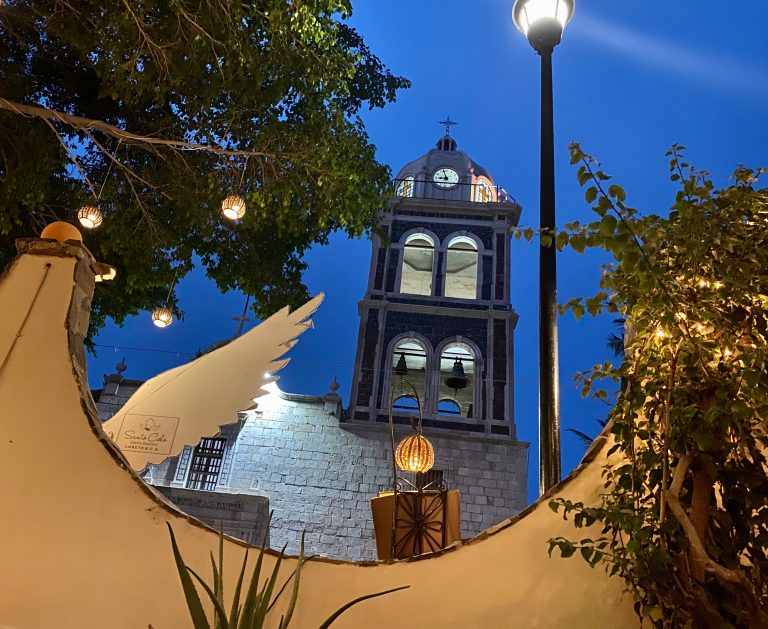
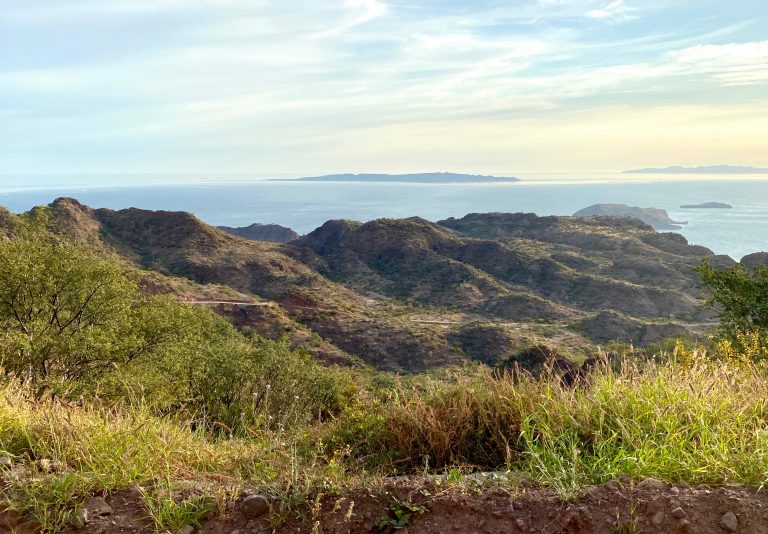
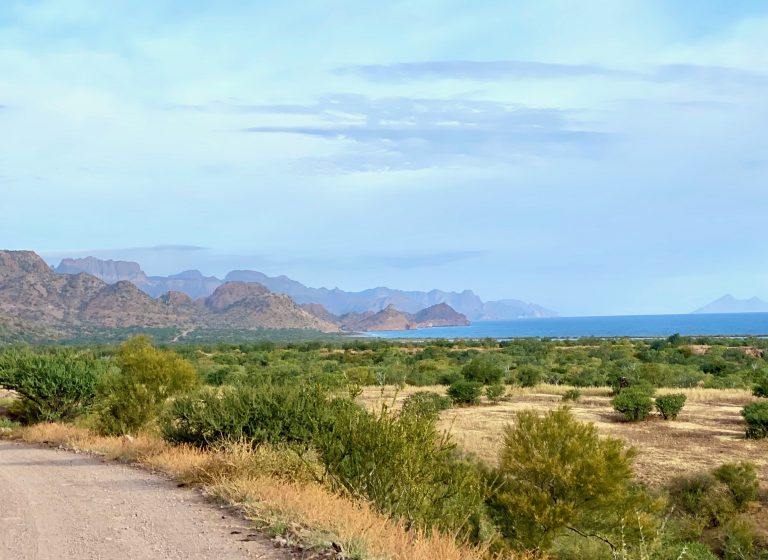
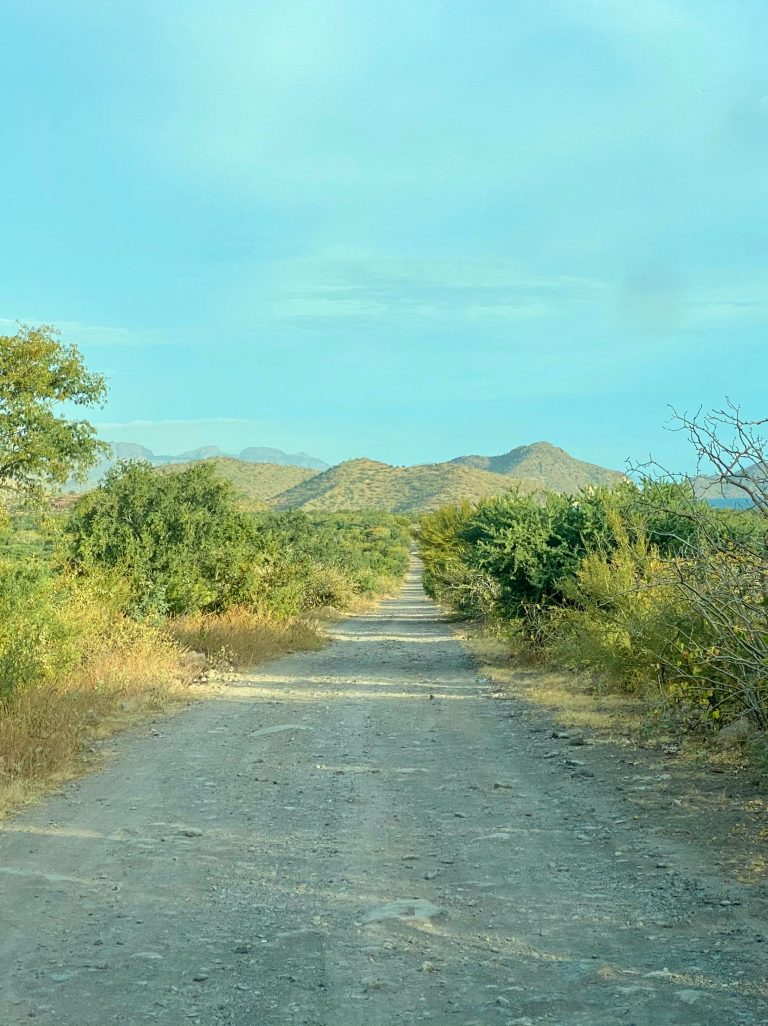
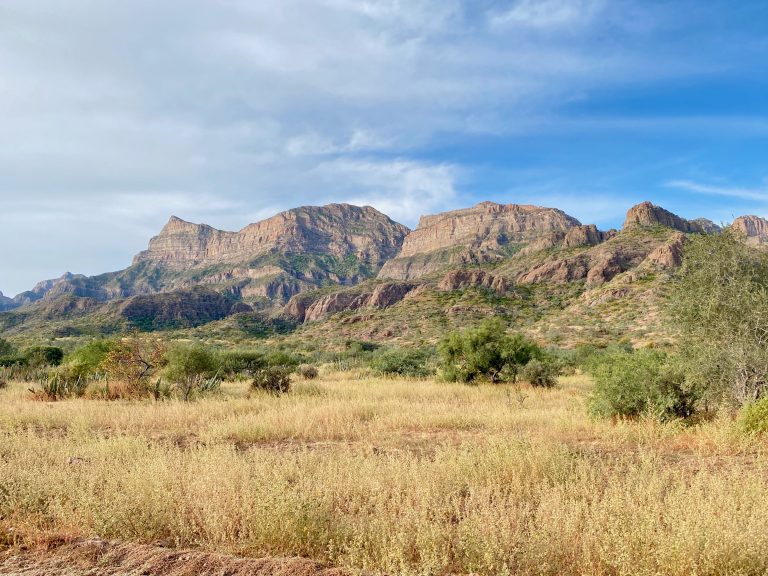
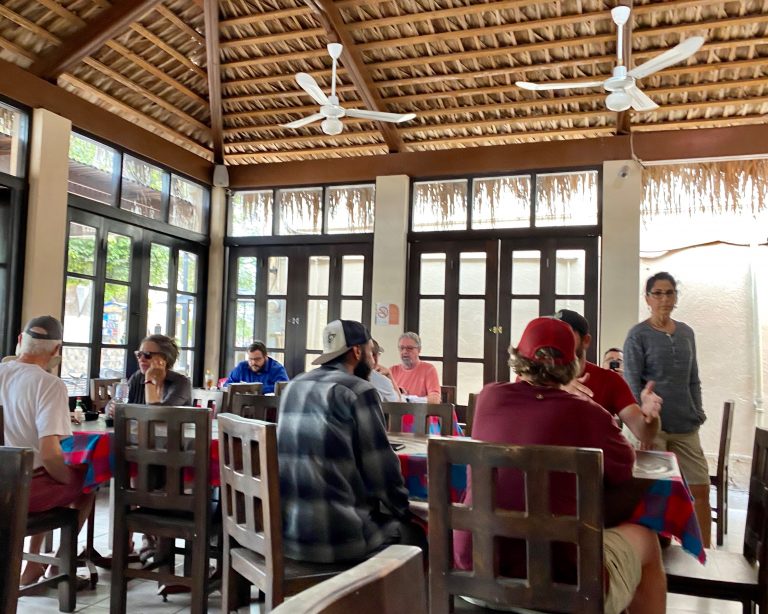
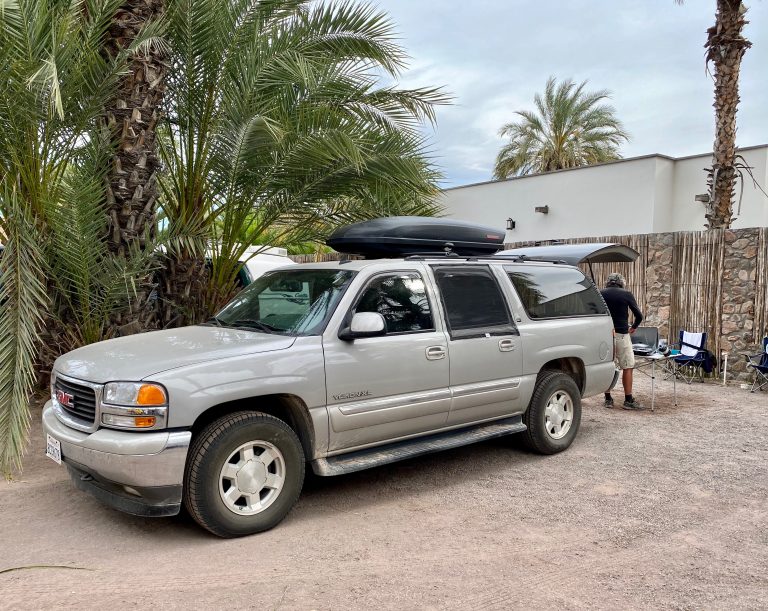
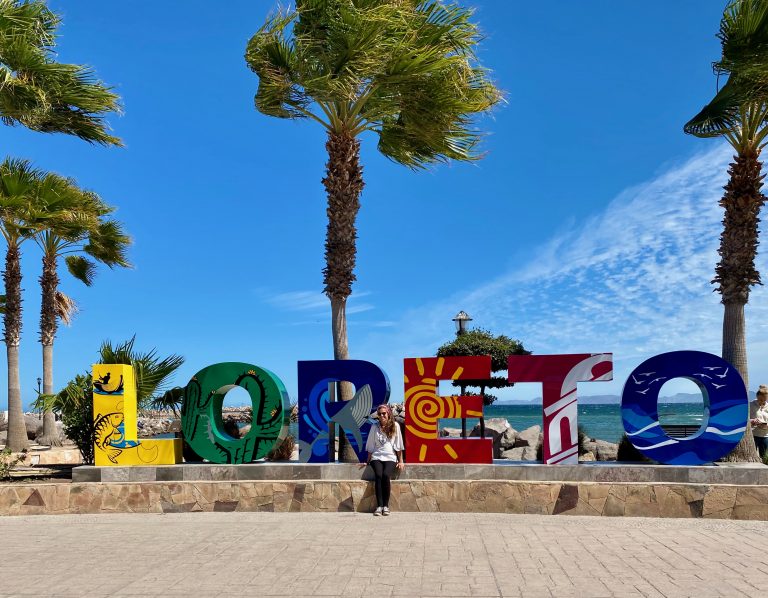
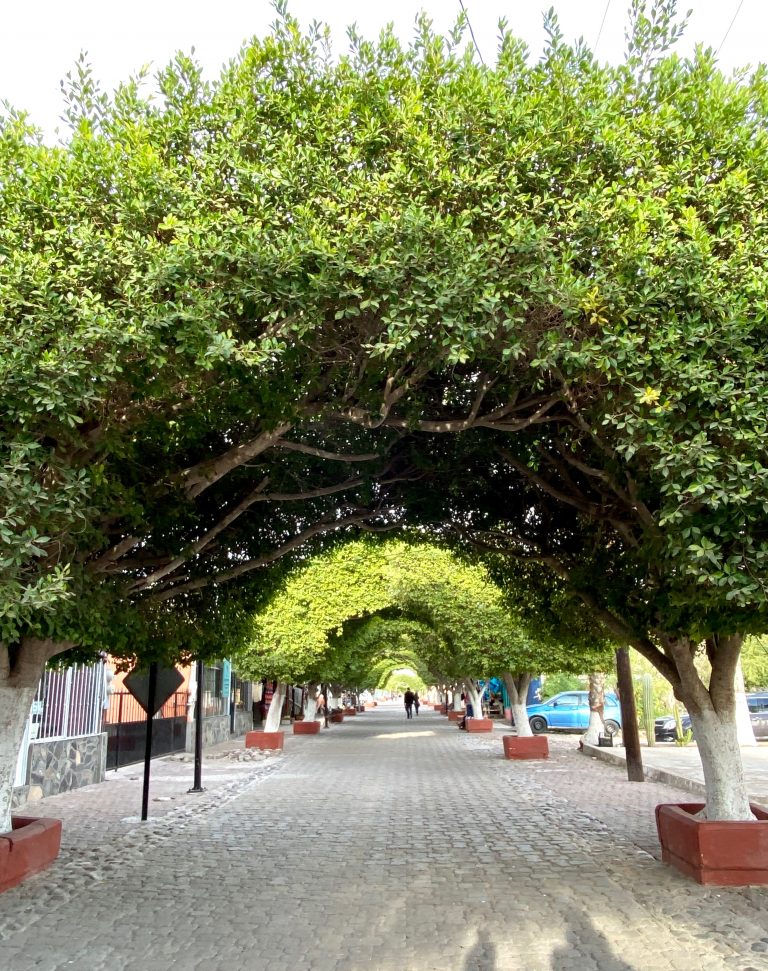
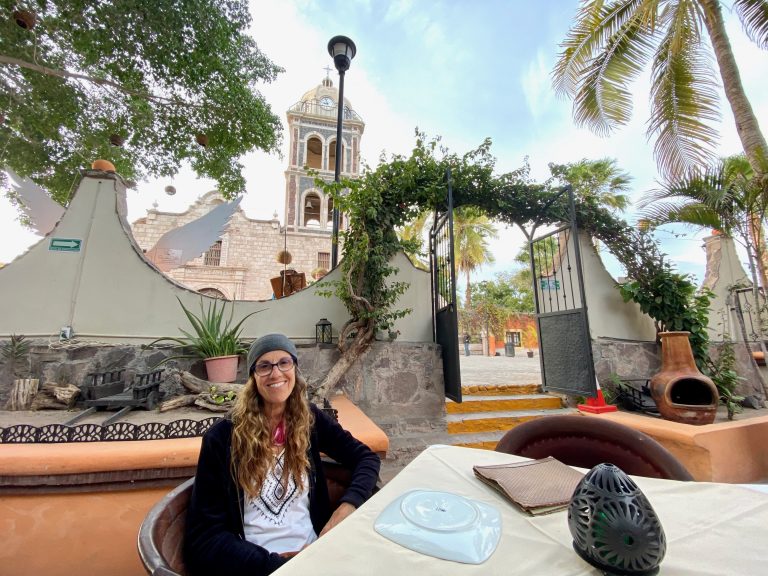
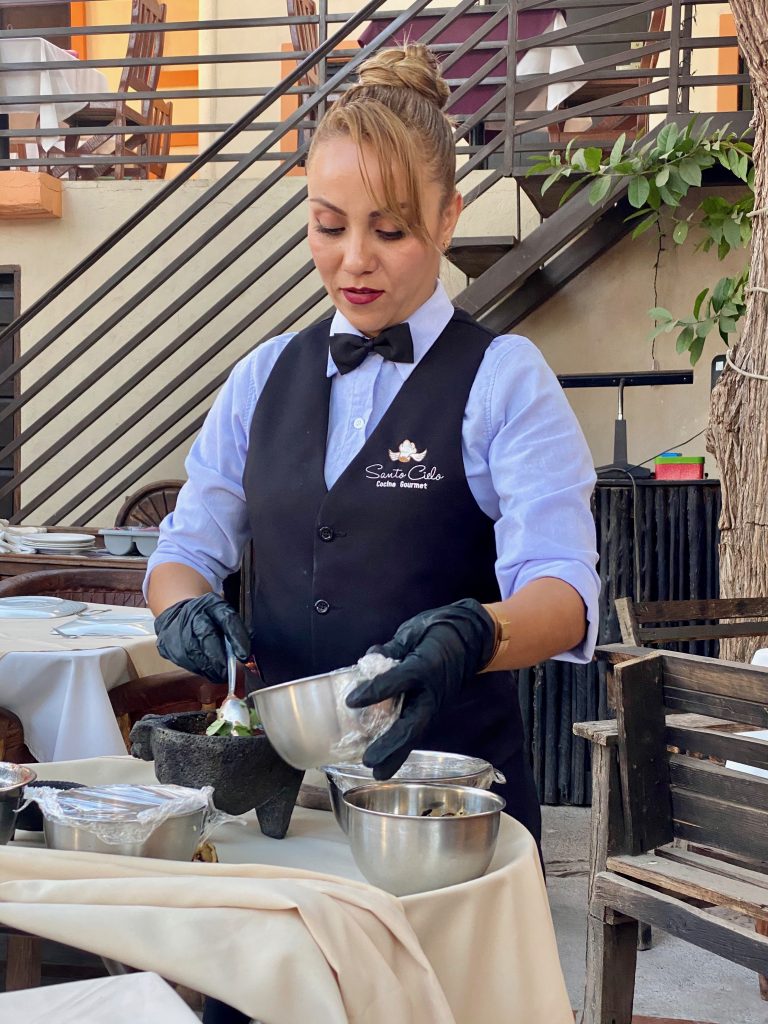
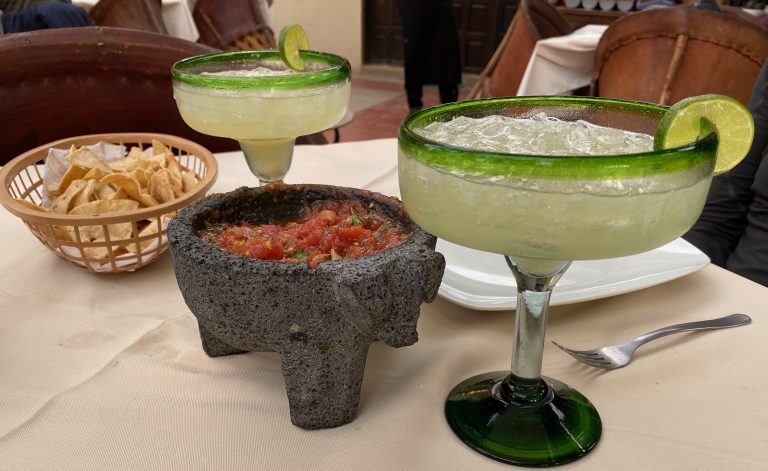
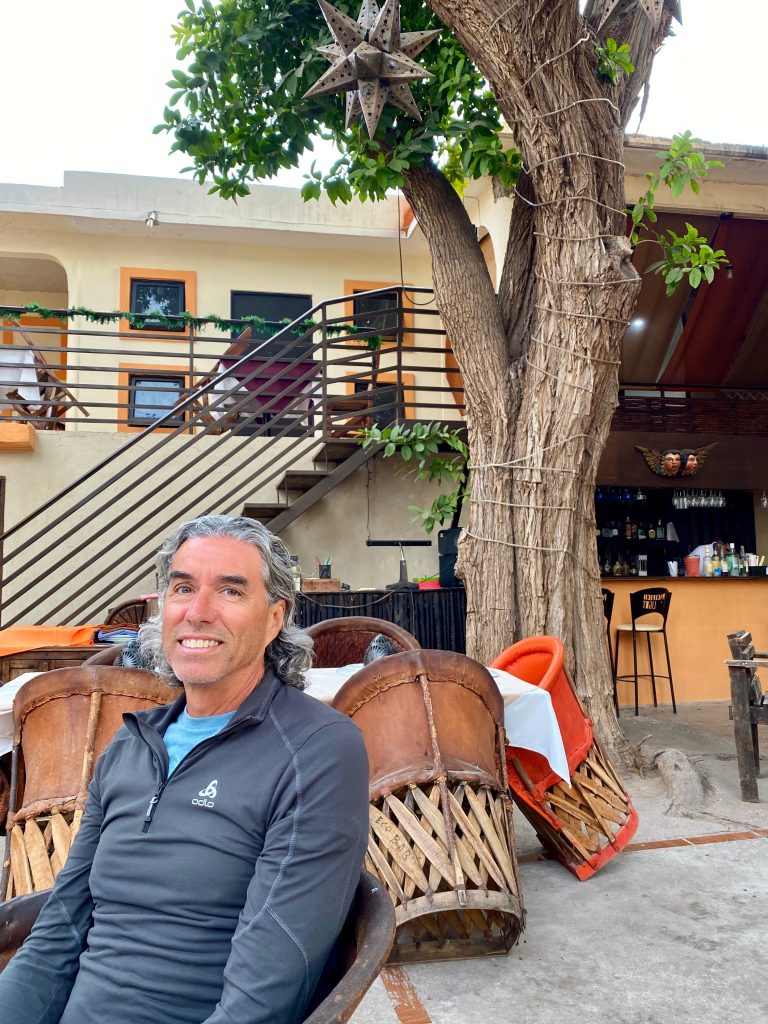
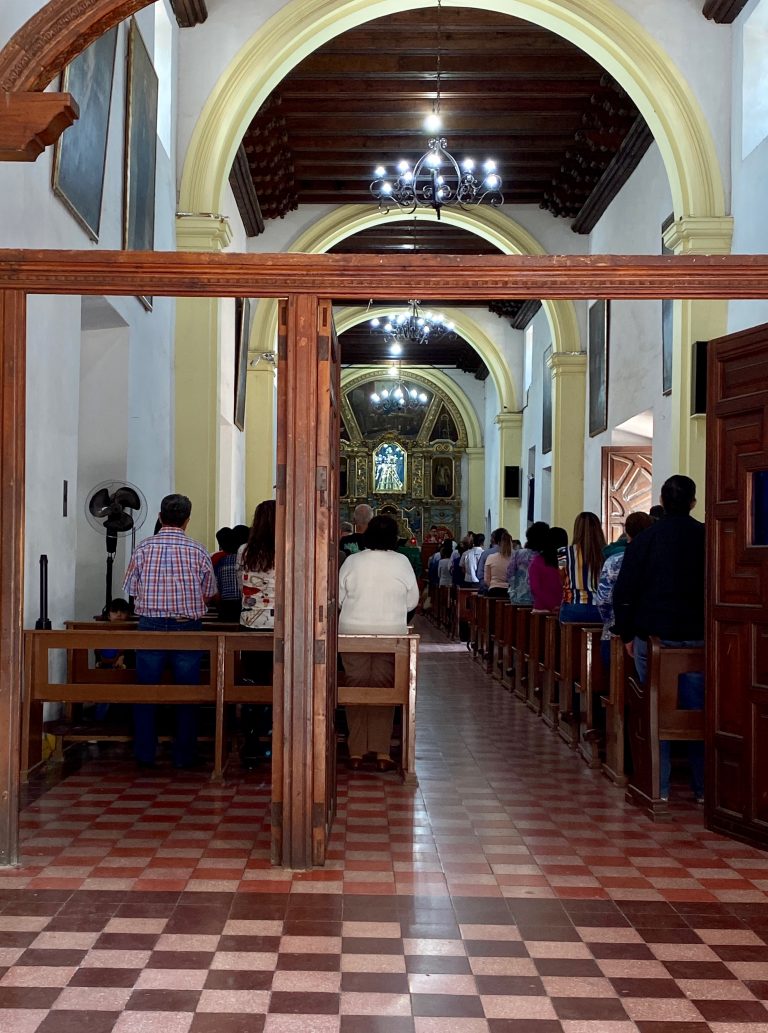
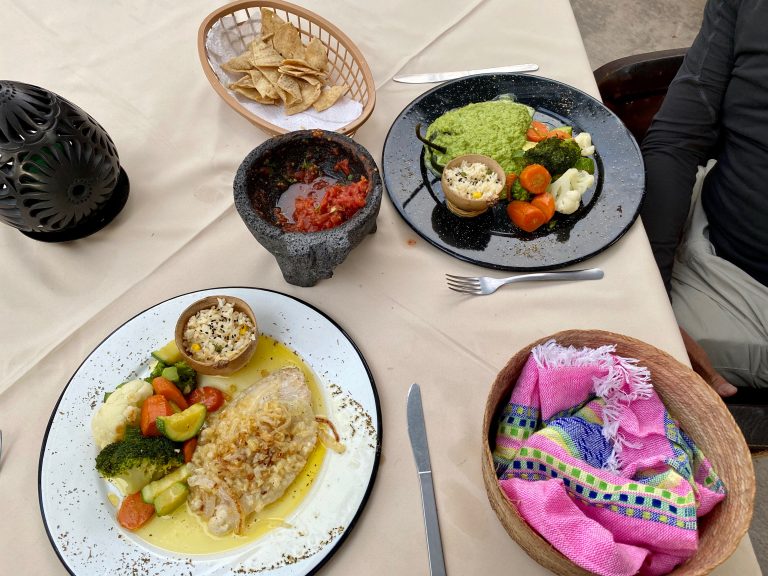
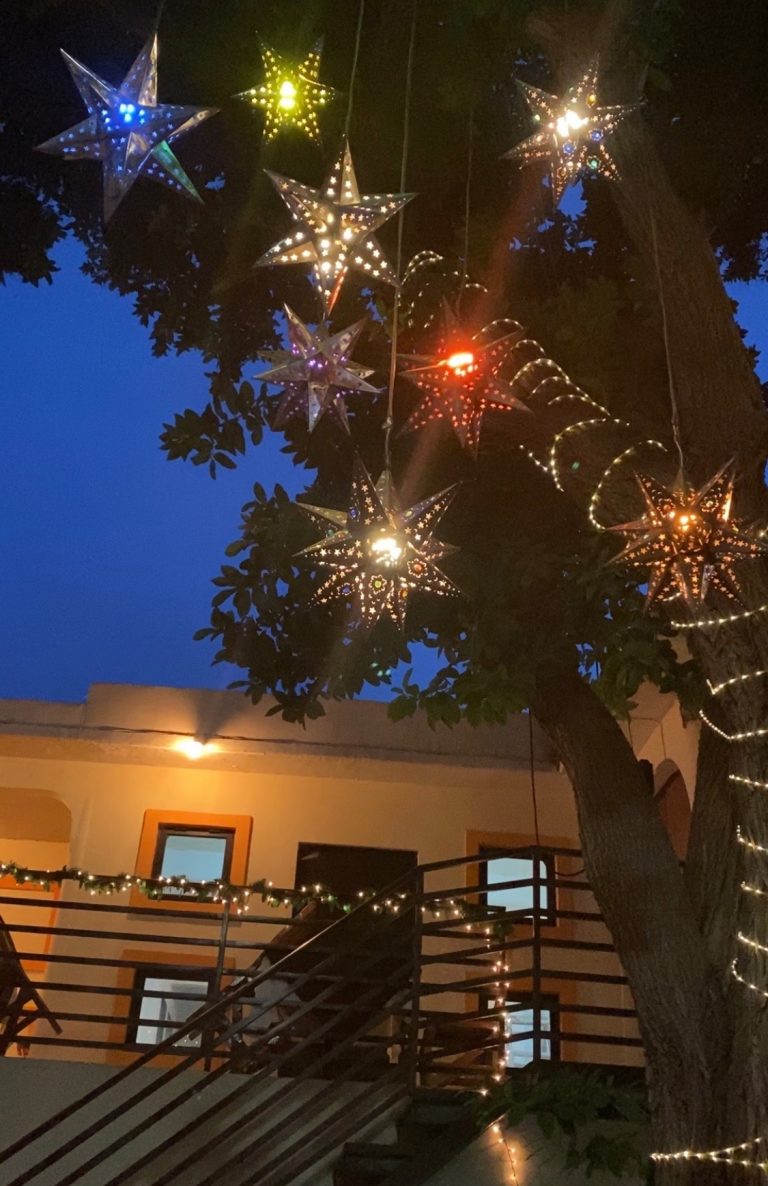
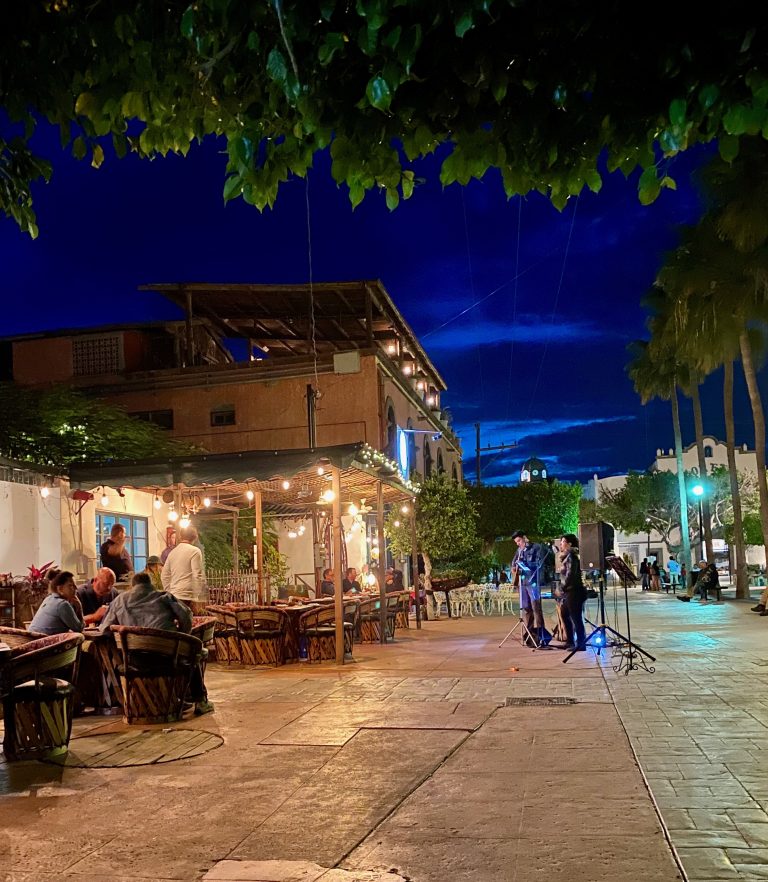
One Response